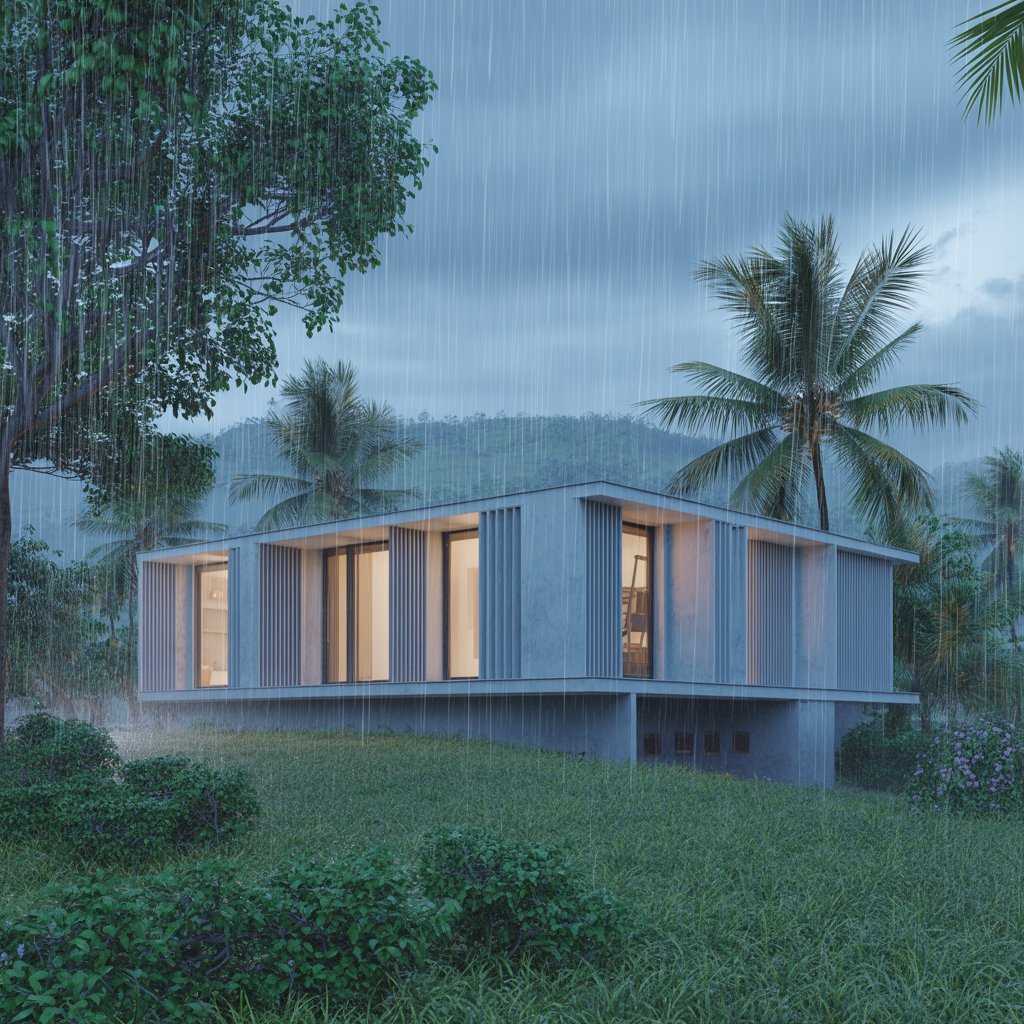The Durability of LGSF Structures in India’s Diverse Climatic Conditions

Strong 8k brings an ultra-HD IPTV experience to your living room and your pocket.
India is known for its diverse climatic conditions, ranging from the humid coastal regions of Kerala to the dry, arid lands of Rajasthan and the chilly Himalayan foothills in the north. With such a variety of weather patterns and temperatures, construction materials need to be carefully chosen to ensure durability and sustainability. In recent years, LGSF structures (Light Gauge Steel Frame structures) have become a popular choice for building durable, energy-efficient, and cost-effective buildings that can withstand these harsh conditions.
As the demand for sustainable and modern construction methods grows, LGSF structure manufacturers in India are at the forefront of providing innovative solutions to meet the country's diverse climatic needs. Let’s explore why LGSF structures are a perfect fit for India’s varying weather conditions and how manufacturers in different regions are helping the construction industry.
What Are LGSF Structures?
LGSF structures are made from cold-formed steel, which is lightweight but incredibly strong. These structures are prefabricated in factories and then assembled on-site, making them a cost-effective and time-efficient building option. The key advantage of LGSF is its resistance to corrosion, its ability to withstand seismic forces, and its energy efficiency. These structures are particularly suitable for residential, commercial, and industrial applications.
For LGSF structure manufacturers in India, producing materials that can endure extreme weather conditions is crucial. This flexibility is one of the reasons why LGSF structures are gaining popularity in cities across India, from the coastal areas of Mumbai and Kochi to the more temperate climates of cities like Bangalore and Delhi.
LGSF Structures and Coastal Regions
One of the most challenging climatic conditions in India is the humidity and salty air of coastal regions. Cities like Mumbai, Kochi, and Chennai are known for their high humidity and proximity to the sea, which can cause traditional building materials like wood and concrete to deteriorate quickly. In such regions, corrosion can be a significant issue for buildings constructed with steel, as saltwater accelerates rusting.
However, LGSF structure manufacturers in India have addressed this concern by using high-quality, galvanized steel for the frames. Galvanized steel is coated with a layer of zinc to prevent rusting and corrosion, making it ideal for coastal environments. Additionally, the cold-formed steel used in LGSF structures is treated to withstand the high moisture levels common in coastal areas, ensuring the longevity and durability of the building.
LGSF Structures in Arid and Dry Regions
On the other end of the spectrum are the dry, arid regions like Rajasthan, Gujarat, and parts of Maharashtra. These regions experience extreme heat during summer, with temperatures often soaring above 40°C. For construction materials, this means a greater risk of cracking, warping, and general deterioration over time. Traditional building materials like concrete and brick can absorb heat, making interiors uncomfortable and leading to higher cooling costs.
LGSF structure manufacturers in India, especially those catering to regions like Rajasthan and Gujarat, have designed LGSF systems that offer excellent thermal insulation. The insulating properties of LGSF structures help maintain cooler indoor temperatures in the summer, reducing the need for excessive air conditioning. This not only makes the structures more comfortable for occupants but also more energy-efficient.
Moreover, LGSF structures are highly resistant to extreme temperature fluctuations. Unlike concrete, which expands and contracts with temperature changes, LGSF structures maintain their integrity and shape, making them ideal for dry regions that experience significant temperature variations between day and night.
LGSF Structures in the Himalayan and Cold Regions
In contrast to the dry heat of the arid regions, the cold climates of the Himalayan foothills, Jammu & Kashmir, and parts of Himachal Pradesh experience harsh winters with heavy snowfall and freezing temperatures. Building materials in these regions must be able to withstand the weight of snow, ice, and the freezing conditions that can cause cracking and degradation over time.
The strength and resilience of LGSF structures make them an excellent choice for these colder climates. Unlike traditional wood and brick buildings, which can be prone to rot and cracking due to moisture from snow, LGSF structures are not affected by the freeze-thaw cycles. The galvanized steel used in LGSF construction ensures that the structure remains intact and does not deteriorate under extreme cold. Furthermore, the insulation properties of LGSF structures provide thermal comfort, preventing heat loss and keeping indoor temperatures stable, even in freezing conditions.
LGSF Structures in Urban and Temperate Climates
In cities like Delhi, Bangalore, and Pune, where the climate is more temperate, the challenge is not so much extreme temperatures but the overall wear and tear caused by pollution and urban stresses. These cities experience high levels of air pollution, dust, and humidity, which can affect the longevity of buildings made from conventional materials.
LGSF structure manufacturers in India provide an excellent solution for urban areas, as LGSF systems are resistant to corrosion caused by pollution. The lightweight and strong properties of LGSF structures also allow for the construction of taller buildings with minimal foundation work, making them a good fit for rapidly developing urban areas. Additionally, the energy efficiency of LGSF structures helps in reducing the carbon footprint, which is increasingly important in metropolitan cities facing pollution and climate change challenges.
Advantages of LGSF Structures in All Climates
LGSF structures are designed to handle the unique challenges of each climate zone in India, and they offer a wide range of benefits:
Corrosion Resistance: As mentioned earlier, LGSF structures are resistant to corrosion, making them ideal for coastal and urban areas with high pollution levels.
Energy Efficiency: The thermal insulation properties of LGSF structures help maintain a comfortable indoor environment while reducing energy consumption.
Speed of Construction: Since LGSF structures are prefabricated in factories, the on-site construction time is significantly reduced, making them a time-saving option for builders in all climates.
Seismic Resistance: LGSF structures are highly resistant to earthquakes, making them suitable for regions like Delhi and parts of Gujarat, where seismic activity is more frequent.
Sustainability: LGSF structures are more sustainable than traditional construction methods, as they use less material and generate less waste.
Conclusion
In conclusion, the durability of LGSF structures in India’s diverse climatic conditions makes them an ideal choice for modern construction across the country. Whether it’s the salty air of the coastal regions, the scorching heat of the arid deserts, the cold winters of the northern mountains, or the urban challenges of pollution and dust, LGSF structures can handle it all. LGSF structure manufacturers in India are playing a key role in addressing these challenges, providing buildings that are not only durable but also energy-efficient and sustainable.
As cities continue to grow and face the challenges posed by climate change, the demand for LGSF structures will only increase. By choosing LGSF construction, developers and builders across India can ensure that their projects are built to last, regardless of the climate in which they are located.
Note: IndiBlogHub features both user-submitted and editorial content. We do not verify third-party contributions. Read our Disclaimer and Privacy Policyfor details.


